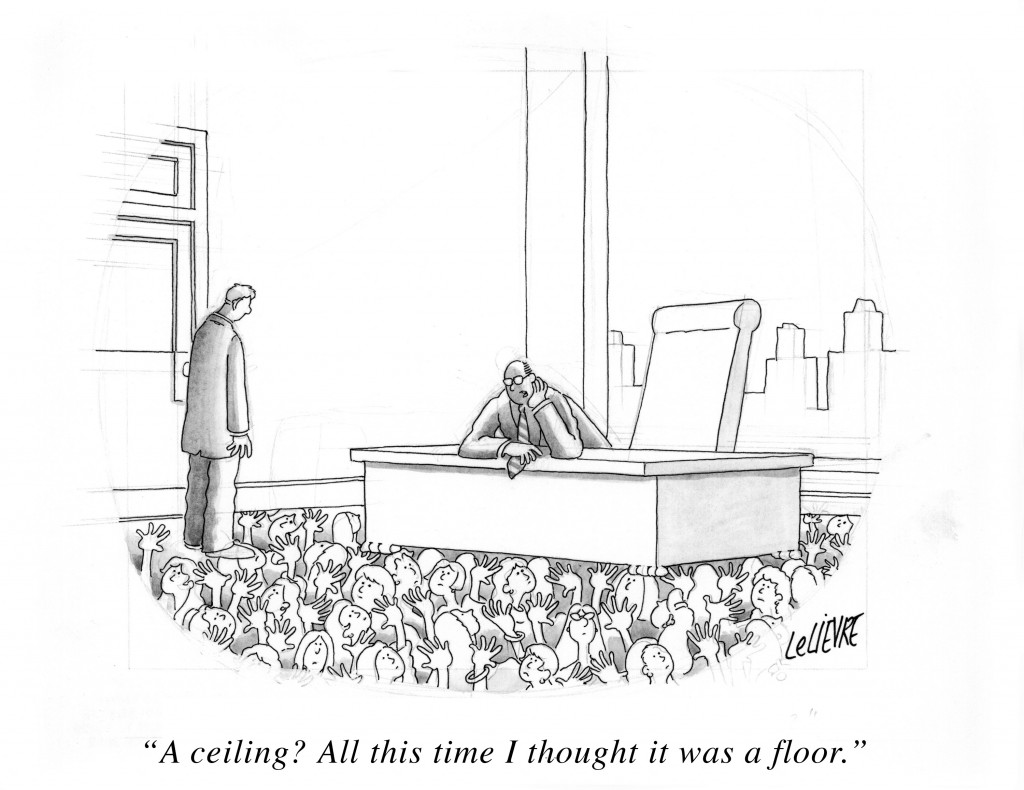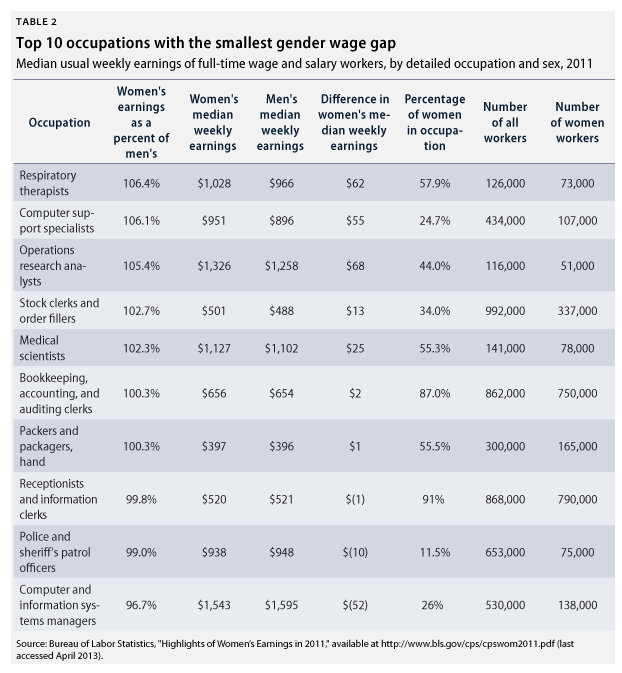Work and the ‘pause: a two way street
Can you believe that three years has passed since I first wrote about Amanda Griffith’s study on menopause and work? The final results are in and they are fairly indicative of the issues that menopause brings to the work environment.
Dr. Griffiths is a professor at the University of Nottingham in the UK. Several years ago, she and her colleagues set out on a journey to discover gender-specific health issues in the workplace other than pregnancy. And, since her target was on women between the ages of 45 and 55, chances are great that the focus would be less on reproductive issues and more on post-reproduction, i.e. menopause. Noting that studies have shown that some women find that their symptoms negatively impact their work life, and that certain work factors, e.g. environment, may increase the intensity of symptoms, Dr. Griffiths also points out that women are generally reluctant to divulge to colleagues or their managers that they are going through menopause. Moreover, even if employers know, what sort of things can they do to help?
Mind you, this study is in the form of an electronic questionnaire and this is the type of design that many will question as introducing bias and issues with recall. However, rest assured, the researchers carefully honed their questions based on an earlier study that was done with a group of women police officers, through one on one interviews with women to discuss the impact of menopause on their health and work and through close review and evaluation by experts in a variety of medical and occupational fields. But enough of the science; let’s get to the meat.
Roughly 900 women were surveyed; about 43% were perimenopausal, 31% in menopause and the rest, on hormones or in menopause due to surgery. Yet, regardless of where they were in their menopause journey, three symptoms were especially problematic when it came to work: feeling less confident, an inability to concentrate and memory issues. Three’s a charm…except when it comes to menopause. The icing on this cake were hot flashes; not only were women unable to control the temperature in their workplace environment (honestly, who does have that ability?!), but having hot flashes became unbearable when the work environments were overly heated or improperly ventilated.
To make a bad situation even worse, over a third of the women said that they worked harder to overcome difficulties so that menopause wouldn’t affect their performance or draw attention to them. Working harder also meant learning the best strategies for coping with their symptoms and worklife. And while, on the surface, this doesn’t sound so terribly awful, can you imagine having to make light of matters, making a list and checking it thrice to avoid mistakes or changing your working hours to hide a condition?!
Managers, take note! What do women want to make their workplace more tolerable? Overwhelmingly, women report that they would be better served if management acknowledged that menopause was a possible health problem and provided more flexible working hours. Better ventilation, air conditioning and temperature control are important. And advice and support? More than 50% of women said that having information and advice from their employers about menopause and coping at work as well as informal support from colleagues would make their work environments more palatable. On the flip side? The researchers say that it might be helpful to explore working women’s attitudes toward their co workers and line managers’ perceptions of menopause; after all, women in the throes of the ‘pause may actually be overestimating others’ abilities to infer menopause status when a hot flash hits and may even have misconceptions about others’ negative perceptions of menopause.
There is no doubt that menopause impacts working ability, environment and relationships. As with any health condition, appropriate support from employers is imperative and may help to reduce stress, help boost performance and insure loyalty. Yet, employers can’t do it alone; women need to be able to communicate their status and their needs. Work and the ‘pause is truly a two way street.
Read MoreWednesday Bubble: The Glass Ceiling is a Myth
Earlier this week. Fox Business ran a piece claiming that the gender pay gap was nothing more than a myth. Some of the more interesting conclusions suggested that there are fewer women in select fields was because they choose to work in industries that pay less such as education, versus those that pay more (and where you find greater numbers of men), such as computer and engineering.
The author writes: “women sacrifice pay for all sorts of reasons including security, safety, flexibility, and fulfillment. Their priorities are vastly different than men’s. And when you account for that, when you compare apples to apples, when women actually make the same career choices as men, there is no gap. Men and women earn the same.” He adds that even when women pursue higher paying fields, such as medicine, they tend to gravitate towards areas that are less stressful, such dentistry rather than specialize in stressful positions such as surgery. Moreover, men work more hours.
While he acknowledges that women are having babies and do most of the child rearing — obvious factors that contribute to the gender pay gap — he claims that these are personal or societally-driven decisions and that truly, the glass ceiling has been broken.
Is this man living under a rock?!
I can rest on my laurels, throw a bunch of statistics in your direction and reinterpret the findings to provide evidence that the gender pay gap is a thing of the past. Or I can share the following proof that it’s not, that this author’s primary point, if you pay close attention to the article, has nothing to do with gender pay and more to do with his opinion that the Federal Government should not be wasting its time trying to equal the paying (pun intended) field.
That aside, let’s get down to brass tacks.
According to the latest figures from the Bureau of Labor Statistics, women continue to be paid less money than men in all but 7 of 534 occupations – respiratory therapy, computer support, operations research analysts, stock clerks, medical scientists, bookkeeping/accounting, and packager/package handlers. You can see the differences in the chart below as outlined by the Center for American Progress:
[Source: Center for American Progress]
Moreover, it’s not simply a matter of women choosing not to enter higher paying fields; often there is a discrimination bias taking place. For example, as Perry Hewett wrote in a 2011 Forbes.com piece, a key reason that women are lacking in tech is because this male-dominated industry is not broadening its professional networks to include more women. Anecdotally, I hear this all the time from my female techie friends. Importantly, the problem is magnified many fold among women of color who are trying the break the barriers. This problem is coupled with the need to improve girls’ access to science and technology programs (and boosting their interests in the same) so that we are producing a greater field of qualified applicants. And my gal pals also echo Hewett’s contention that visibility is a huge issue; even women who participate in more highly visible events are often invisible to the masses. Those who speak up are often ostracized when they do. The problem is pervasive.
In medicine, the reality is just as harsh. Although women are now entering medical school in droves, studies have suggested that gender discrimination is a large factor driving where females ultimately end up; in one survey, 75% of women on a surgical track had experienced gender discrimination. More specifically, female physicians have three choices in order to excel:
- deny that there is any distinction between her and her male colleagues, thereby joining the man’s clube and be subject to be treated as a “neuter”
- assume a more traditional societal role as a seductive, helpless, dependent female, which means she is then treated as a sex object
- become a superwoman and compulsive overachiever in career and family roles in order to supercede expectations in all areas of her life
As I’ve written previously, gender and age discrimination is also pervasive in the film and entertainment industry. I’m sure that there are more fields, more data, more anecdotes; I’ve simply scratched the surface with the most obvious. However, the issues underlying and driving the glass ceiling are complex. In some areas, women have shattered it; in the majority of others, it is intact. And to overcome the challenges we face as women, it’s more than simply leaning in, or making choices other than the ones that many women are forced to make.
The gender pay gap? It’s real and not going away anytime soon. And it will take more than empowerment to move the needle. I’m not entirely sure what the answer is. But when it comes to action, the future is now.
Read MoreWednesday Bubble: Pink Elephant Redux
Today’s bubble features an oldie but goodie. The more things change, the more they haven’t.
Isn’t it time that we women start to acknowledge the pink elephant in the room???
In 1980, I worked as an intern on the municipal bonds floor of a well-known brokerage/financial institution. Although it was certainly not my “thang,” I learned a tremendous amount about how the business world operated, and most importantly, about the games that people play.
One thing that struck me in particular at that time was the role of women in this business and how they dressed and behaved. Women were not abundant in positions of power, and those who were, well, in some respects, they emulated men; they were aggressive, competitive and not particularly kind to one another.
Clearly, things have changed drastically in the almost three decades that have followed. But one thing that hasn’t changed much is how sisters act in the workplace.
A line from this wonderful article that appeared in the New York Times several years ago made me realize that certain stereotypes continue to perpetuate bad behavior. And, that as Author Peggy Klaus so aptly writes, “the pink elephant is lurking in the room and we pretend it’s not there.”
The pink elephant is lurking in the room.
Klaus’ point is that rather than help build each others career, women often work to derail each other, engaging instead in “verbal abuse, job sabotage, misuse of authority and destroying of relationships.” She cites data suggesting that this type of behavior is directed from women to women >70% of the time, while the men who are “bullies in the workplace,” direct their aggression equally to both genders.
Klaus offers numerous reasons why women become aggressors in the workplace: scarcity of positions, bootstrap (I pulled myself up, why should I help you?) and hyperemotionality that leads to an overinvestment in workplace occurrences that cause them to hold grudges.
Her point, however, is not to determine the why but rather, engage one another to put an end to this type of behavior.
I’ve written previously that as we grow older, friendships and support of one another are essential to our overall wellbeing. Regardless of whether its in the workplace or in our personal lives, supportive relationships allow the soul to flourish and grow. Personal resources as they pertain to social support also help see us through the rougher aspects of menopause.
Should women give preferential treatment to one another? No, absolutely not. But as Klaus says, perhaps we should start treating one another as we want our “nieces, daughters, granddaughters an sisters to be treated.” We should simply… acknowledge the pink elephant in the room. And show it the door.
Read MoreReinventing Women: Send me an angel…meet Beth Collins
 What do you do when you put out an open call for life stories and an angel answers? That’s Beth Collins, co-creator of Elizabeth’s House, a resource center for women who want to rethink, renew, and reinvent their lives. Truly, I could not have found a more ideal person for a series about reinvention.
What do you do when you put out an open call for life stories and an angel answers? That’s Beth Collins, co-creator of Elizabeth’s House, a resource center for women who want to rethink, renew, and reinvent their lives. Truly, I could not have found a more ideal person for a series about reinvention.
Who is Beth Collins? Beth is a personal and creative coach and her story of reinvention is focused on beginnings. To Beth, reinvention starts “from where you are to all that you know. It’s saying yes to something more and then creating the space in your life to find out what that more looks like.”
She explains that her calling to create on behalf of other women came during a time in her life when she had reluctantly left a dream job in college administration to become a working and then full-time, stay-at-home mom. However, answering her ultimate calling has been anything but easy; in fact, her ever-shifting path has been wrought with roadblocks and detours. When she left the corporate world for a world of play dates, room mothering, volunteer committees and booster clubs, she still had an urge to serve women in transition, an itch to scratch that would take more than six years to realize as she followed and supported her husband through multiple relocations. At the age of 46, just as she was finally hitting her stride and passion, she was sidelined again: “I got hit by a truck, literally.”
Through a ‘jaws of life’ rescue and time in the neuro-ICU, Beth faced yet another tough decision: rest or keep going?
In the mid 1980s, Austrian Monk Bhanke Dhammika wrote the Dhammavadaka, a poem designed to present inspiring aspects of a Buddhist’s life. One line in particular resonates:
None can live without toil and a craft that provides your needs is a blessing indeed. But if you toil without rest, fatigue and weariness will overtake you and you will be denied the joy that comes from labour’s end.
Like Dhammika, Beth realized the value in rest and so, she resigned from yet another job that she had grown to love to allow her body proper time to heal. Not surprisingly, in this quiet she heard yet another calling and in 2006, began a mentoring and coaching business for women who were ready to reinvent their lives. “I had clients in five states and was curious when I realized that these women were all asking for the same things,” Beth explains. “They longed for a community that would support their journey of change. Inspired by their requests, I began envisioning what a place like that would look like and in 2007, opened the doors to Elizabeth’s House, a gathering place for women who want to reinvent their lives.”
Elizabeth’s House embodies a lifetime of dreams combined with a unique passion to help women. Beth’s personal story? It’s one of “pure belief in a dream, letting go of the outcome and saying yes to what showed up.” And while she says that some would characterize that attitude as courageous while others may call it crazy, the women who’ve landed at the door of Elizabeth’s House call it a gift. “Together we rally when a woman quits the job she hates to create something new and when returns to that job after realizing that it wasn’t the job she hates. We rally around trying new things, getting it wrong, marriage, divorce, cancer and even suicide. It’s been life -changing for the women who find us and for me.”
It’s not surprising that women helping women lies at the core of Beth’s story of reinvention. She says that unquestionably, “What I’ve learned, what I know beyond any doubt,” is that self-help books, online support and endless “coaching” programs are not enough for women who long to reinvent. They are going to need other women who are willing to tell the truth about their lives. They need to know that they are not alone in their desire for change.”
Say yes and let go of the outcome(s). You may take a beating to get your wings but eventually, like Beth’s they’ll grow into something beautiful.
Read More
Reinventing Women: Paint with a broader brush stroke…meet Aliza Sherman
I first met Aliza Sherman a few years ago at BlogHer. She walked into the hotel room that I was sharing with my sister in law, wearing a pink boa and exuding a joie de vivre air that was infectious. And that image has been indelibly sketched into my brain to this day. So, I was thrilled when Aliza wrote in response to my open call for Reinventing Women with a desire to share her story of evolution and consistent change. Just like a chameleon, it appears that deliberate transformation, however challenging at times, has allowed her to thrive.
Data have shown that when faced with significant adversity, many individuals are able to harness their experiences into ‘stress-related growth,’ thereby achieving positive and constructive change in their selves and in their lives. Aliza explains that drastic changes in her life began to unfold in the 90s, when she was held up at gunpoint and kidnapped. While she managed to escape her captors, she says that it was a turning point for her, and altered how she looked at her career. Although only in her 20s at the time, she had already lived two professional lives, first in the music business working with Metallica and Def Leppard, and then with a small non-profit working on domestic abuse. “I think that I was lucky in my unluckiness of being held up,” she says.”I lived to realize how short life really is and how I needed to pursue my own dreams.” And pursue them, she did, founding Cybergrrl, Inc — the first full-service internet company owned by a woman — and then Webgrrls International, a consortium known as the first global women’s new media networking organization.
For Aliza, reinvention refers to constantly rethinking what she’s doing — how she’s living, how she’s behaving, how she makes decisions and how she presents herself. “For many years, I’ve said I admire Madonna for the way she reinvents herself. Every few years she pushes creative envelopes, becomes a new ‘persona,’ and controls her destiny. I love that.” Similarly, every few years, Aliza has pursued new lines of business and changes what she focuses on with her work. “While I don’t fundamentally change as a person, the incremental shifts of getting older make me want to do bolder brush strokes to redefine how I spend my time and energy and put myself out there in the world.”
Putting oneself out in the world has taken on a new meaning for Aliza. While she regrets never hitchhiking across Europe right after school, she did head out into the world in the figurative sense, forging a new and important digital path for women. That path took her out of NYC and West, first to Wyoming, where she worked for the State in a public relations capacity, started an internet marketing company, and then stopped consulting and became a television producer with Wyoming Public Television and Public Radio. Not one to rest on her laurels and clearly, changing colours yet again, Aliza explains that she met her future husband, moved to Alaska and transformed her business into a social media marketing consultancy and then an agency in a matter of only three years.
The positive aspects of Aliza’s chameleon nature have a darker counterpart. She explains that because most of her constant changes occurred while single and living on her own, the impact on others was not immediately apparent to her. “Once I got married, suddenly my reinventing felt stymied and having a baby with several years of severe complications after, I was in a fog and a very bad place.” This challenge is one that continues to haunt Aliza; she says that knowing that her husband and daughter are affected by her choices makes it more difficult to find the the proper balance between doing what’s right and best for them and what’s best for her. I’m ‘still trying to work out that dance,” she says.
Still, a life without change would be a regretful life. Never believing in the ‘shoulda woulda coulda,’ Aliza’s story forces one to focus. Her advice to other women in similar predicaments, with a wanderlust and a joie de vivre, facing significant adversity? “Trust your instincts. Realize life is short and you can’t keep saying you will get to something later because later may not be an option. The worst that can happen is you fail. And then? You pick yourself up and start over.” To Aliza, failure is fuel and she says that it should be regarded as fodder for one’s next success. “Don’t let the naysayers stop you. Surround yourself with cheerleaders. Don’t live a life of regrets.”
Aliza’s mother of reinvention has clearly been to consistently paint with a broader brush stroke. Now 47, she appears to only be warming up for what’s next on the horizon.
(If you are just catching up with the Reinventing Women Series, I want to hear your story of midlife (or like Aliza, constant) change. Just like Hessie Jones and Karen-Rogers Robinson and my friend Aliza, I am sure that your personal pearls of wisdom can help thousands of other women. Write to me at flashfree111@gmail.com)
Read MoreReinventing Women: The Playing Field is Ripe for Change. Meet Karen Rogers-Robinson…
 The National Women’s Law Center recently reported that women continue to lag behind men in terms of job recovery, regaining less than a quarter (24%) of jobs lost during the country’s recession compared to their male peers (who’ve regained 39%). A large part of the problem driving the slower recovery among women has been the loss of public sector jobs. The lesson? While this news may appear dismal at face value, it supports Social Media/Social Technology Consultant Karen Rogers-Robinson contention that today’s financial and work economy truly is “a perfect time to reinvent yourself,” pointing out that “the playing field has been wiped clean for most.
The National Women’s Law Center recently reported that women continue to lag behind men in terms of job recovery, regaining less than a quarter (24%) of jobs lost during the country’s recession compared to their male peers (who’ve regained 39%). A large part of the problem driving the slower recovery among women has been the loss of public sector jobs. The lesson? While this news may appear dismal at face value, it supports Social Media/Social Technology Consultant Karen Rogers-Robinson contention that today’s financial and work economy truly is “a perfect time to reinvent yourself,” pointing out that “the playing field has been wiped clean for most.
In 2009, Karen was forced out of 21 years of service at AT&T, losing an essential foothold of income and perhaps the dream that many like herself had bought into. She says that during her tenure, she was “in touch with her inner Boomer” and hadn’t believed that they would force her out, particularly because she had been a top revenue producer and a top performer in her department. Yet, the job had its plusses and minuses; “While I loved the techie geek that I had evolved into over the previous 20 years,” she explains, “I HATED what I was doing! So, I decided that since my children were grown and I had only me to take care of, I should try something new.”
For Karen, this meant taking decades of basic customer service skills, dynamic telephone strategies and web page development she acquired at AT&T and diving into the social marketing and tech landscape. In fact, that transition (which took place immediately following her job loss) landed her initially as founder of Onyx Mobile Marketing, a firm connecting small business owners to their clients via text message marketing and mobile apps and now, principal of a burgeoning and evolving social media marketing and branding consultancy, SMMMDiva.. Her reinvention? A self-described “a new and improved version [of Karen] with more bells and whistles.”
Karen says that while she has felt good about the choices she’s made, the change has been drastic and has affected her lifestyle immensely. These choices have also affected her relationship with family members who long relied on her as a financial lifeline. Moreover, while she was undergoing her transition from AT&T employee to social media diva, her significant other also left.
Fortunately, despite the challenges, Karen has a good financial and emotional network in place to provide footing when the ground has been shaky. She says that this an essential in the reinvention process, as is having a strategic plan. However, she notes that she had only been three years away from having a fully vested retirement, adding “had I been smart when the first cuts [at AT&T] started, I would have started my reinvention plan [then].”
Hindsight may always be 20-20 but the time for reinvention might be now. “Why be unhappy and stressed trying to keep a high paying job when it could be taken away at the blink of any eye and not because of how you performed? Life is short; do what makes you happy.”
Read More











